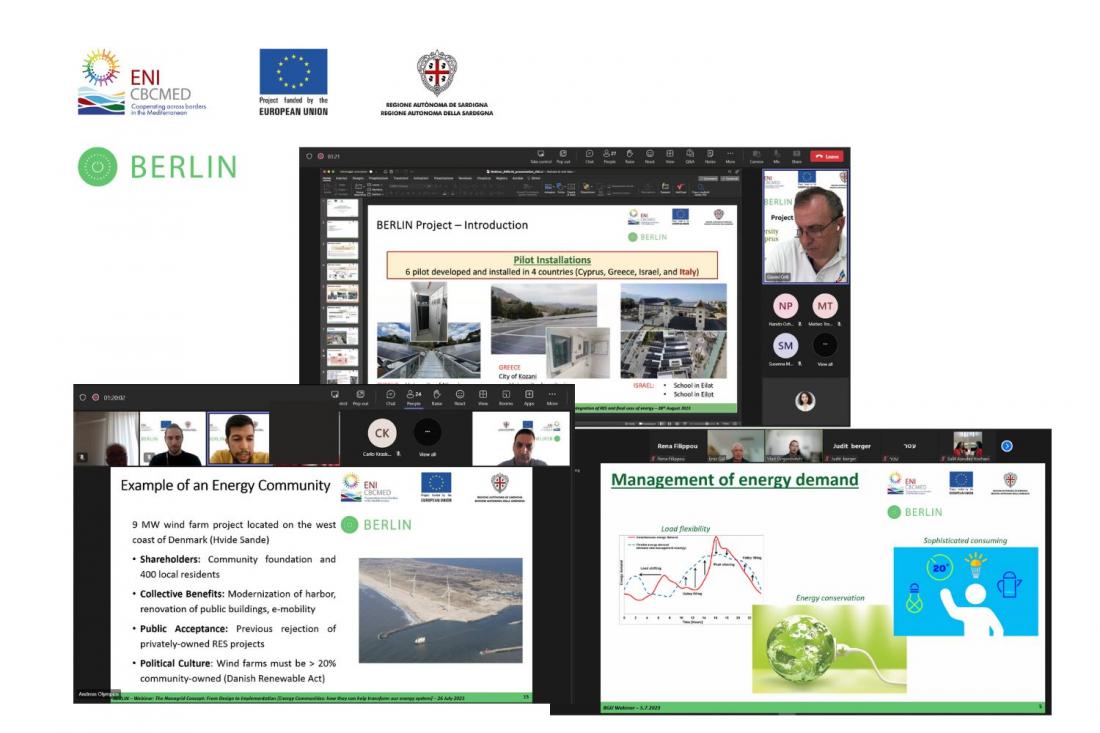BERLIN disseminates the pedagogic aspects of the project and discusses the benefits of utilizing low carbon technologies towards energy reduction

BERLIN project not only made significant advancements in terms of research and innovation but played an important pedagogical role in Israel with the tools developed and the activities taking place at the private and public schools in Eilat and Eilot. More specifically, the team of researchers from Ben Gurion University (BGU) organised an interesting webinar on the “Pedagogic aspects of BERLIN project” showcasing the insulated system at the schools, the air quality monitoring system, and the pedagogic activities at the schools, including the movie that was created. The presentations were followed by a round-table discussion moderated by the BGU team.
In the same framework, our Italian Partners from the University of Cagliari (UNICA) organised an insightful webinar on the topic of “Low carbon technologies for the reduction of energy demand - Integration of RES and final uses of energy” with presentations on the BERLIN project and “The evolution of the electricity system: the role of flexibility and innovative technologies in the energy transition” by Prof. Celli and Prof. Pilo respectively, but also other related topics such as the “The Australian Approach to Solar PV and Distribution Networks” by Prof. Ochoa from the University of Melbourne, Australia and “CBA of green investments” by Dr. Troncia, from the University Pontificia Comillas, Spain. The webinar continued with a round-table discussion and closed with some final remarks.
Lastly, University of Cyprus also held an online webinar explaining the nano grid concept from designing process to implementation process. The webinar provided participants with a solid grounding on the nanogrid concept and knowledge on the steps from design to implementation of a nanogrid using a real-life case-study; the newly developed “FOSS Living Lab Nanogrid”. The replicability potential of the “FOSS Living Lab Nanogrid” in other contexts was also covered as well as the potential of further integration of other technologies, specifically, with a green hydrogen subsystem for seasonal energy storage, and heating/cooling subsystems such as heat pumps, thermal energy storage, to increase the nanogrid self-sufficiency rate capability. The webinar also covered the potential of scaling-up a nanogrid to a microgrid, and its integration in energy communities.









